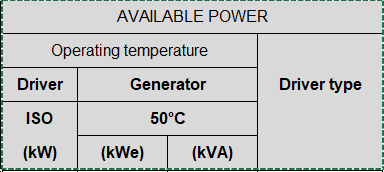I think for most "lay engineers", the issue is that, like all standards, they try to allow you compare apples to apples.
Hence the key line in that very useful set of definitions cat serv eng sent is one which says
"with the declared power adjusted or corrected as determined by the manufacturer to the standard
reference conditions specified in ISO 14396,"
In other words this is, I believe, 15C and 101.625 Kpa atmospheric pressure, i.e. sea level and cool air.
So then as this is not where most engines work, all mfrs then give de-rating charts or tables for the amount of power your ISO 1000kW engine can produce at the 1000m up in 45C of air temp ( probably about 800kW).
But it just gives everyone the same base condition with which to officially rate their engines & generators.
So when your non technical manager or finance person asks why are buying / using a 1250kW engine (ISO rating) for a 1000 kW actual duty you have the answer.
It's a bit like the manufacturers petrol (gas) consumption figures for cars. I don't know anyone that can get within 15% in real life, but to compare one vehicle to another they are a useful tool as they are also undertaken in ideal conditions. But you would never buy one actually expecting it to do what the mfr stated.
Remember - More details = better answers
Also: If you get a response it's polite to respond to it.



